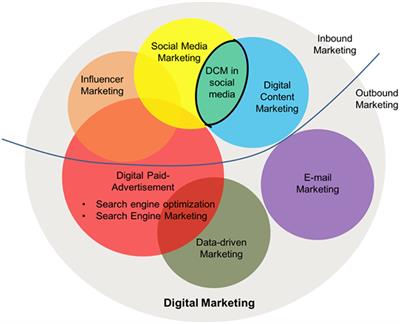Table of Contents
In the age of digital marketing dominance, catalogs and direct mail might seem like relics from a bygone era. However, these traditional marketing tools have not faded into obscurity; rather, they continue to thrive and demonstrate their relevance in the modern marketing landscape. In this article, we will explore the enduring appeal and effectiveness of catalogs and direct mail, shedding light on their continued role in successful marketing strategies.
In the age of digital marketing dominance, catalogs and direct mail might seem like relics from a bygone era. However, these traditional marketing tools have not faded into obscurity; rather, they continue to thrive and demonstrate their relevance in the modern marketing landscape. In this article, we will explore the enduring appeal and effectiveness of catalogs and direct mail, shedding light on their continued role in successful marketing strategies.
The Power of Tangibility in a Digital World
In a world saturated with digital content, the tactile nature of catalogs and direct mail pieces sets them apart. These physical marketing materials offer something that digital channels can’t replicate – the opportunity for consumers to engage with a brand in the real world. When a beautifully designed catalog arrives in the mailbox or a well-crafted direct mail piece is opened, it demands attention. The recipient can hold it, feel its texture and flip through its pages at their own pace. This tangible experience creates a lasting impression that lingers far longer than a fleeting online ad or email.
Building Personal Connections
Catalogs and direct mail also provide a unique opportunity to build personal connections with consumers. Personalization techniques, such as addressing the recipient by name and tailoring the content to their preferences, can make these marketing materials feel like a thoughtful gesture rather than a mass-produced message. In an era where consumers are increasingly skeptical of invasive online tracking and data privacy concerns, direct mail allows brands to communicate with a personal touch, respecting the recipient’s privacy.
Standing Out in a Crowded Digital Space
In the digital realm, consumers are bombarded with advertisements, pop-ups and emails vying for their attention. Catalogs and direct mail pieces offer a refreshing break from this digital noise. When a beautifully designed catalog arrives in the mailbox, it’s often welcomed as a moment of calm and delight. It stands out as a physical artifact in a sea of virtual distractions. This exclusivity can help your brand cut through the clutter and leave a lasting impression on the recipient’s mind.
Tracking and Measuring Success
Contrary to the misconception that traditional marketing tools lack tracking capabilities, catalogs and direct mail can be measured and optimized for success. Modern printing and mailing technologies, combined with data analytics, allow marketers to track response rates, conversions and ROI with precision. This data-driven approach ensures that resources are allocated effectively, making catalogs and direct mail a viable and accountable component of a marketing strategy.
The Synergy of Multichannel Marketing
While catalogs and direct mail can shine on their own, they also complement digital marketing efforts. They can serve as a bridge between offline and online channels, driving traffic to websites, social media profiles or mobile apps. By integrating catalogs and direct mail into a multichannel marketing strategy, brands can create a seamless and holistic customer journey that maximizes engagement and conversions.
In conclusion, catalogs and direct mail have not become relics of the past but rather evolved to thrive in the digital age. Their unique attributes of tangibility, personalization and the ability to stand out in a crowded digital space make them valuable tools in a marketer’s arsenal. When used strategically and in harmony with digital channels, catalogs and direct mail continue to play a vital role in building brand awareness, driving customer engagement and ultimately contributing to the success of modern marketing campaigns.
Looking for more insights? You’ll find them right here in our extended coverage: UMass Course Catalog: Marketing Courses
Tactile Engagement
Catalogs and direct mail offer something that digital marketing cannot replicate – tactile engagement. Holding a physical catalog or a well-designed piece of direct mail creates a sensory connection that engages multiple senses. This tangible experience leaves a lasting impression on recipients.
Catalogs and direct mail represent a unique and invaluable aspect of marketing that digital strategies cannot fully replicate: tactile engagement. The power of holding a physical catalog or a thoughtfully designed piece of direct mail in your hands cannot be overstated. This tactile experience transcends the digital realm and taps into the sensory realm, creating a profound and lasting connection with recipients. Here’s a deeper exploration of the impact of tactile engagement:
Multi-Sensory Experience: When recipients hold a catalog or direct mail piece, they engage multiple senses simultaneously. They feel the texture of the paper, flip through pages and visually absorb the content. Some may even notice the subtle scent of ink and paper. This multisensory experience heightens the overall impact and memorability of the marketing material.
Enhanced Perceived Value: The tangible nature of physical marketing materials often leads recipients to attribute a higher perceived value to the contents. A well-crafted catalog or direct mail piece conveys a sense of effort, quality and thoughtfulness that digital content can struggle to replicate. This enhanced perceived value can influence recipients’ perceptions of the brand and its offerings.
Reduced Digital Overload: In an age of digital saturation, physical marketing materials offer a welcome respite. Recipients appreciate the break from constant screen time and appreciate the opportunity to engage with something tangible. This reduced digital overload can make your marketing message stand out amidst a sea of digital noise.
Increased Attention and Focus: Tactile engagement encourages recipients to devote more attention and focus to the content. Unlike digital channels where distractions are just a click away, physical materials capture and retain attention more effectively. This extended engagement duration provides ample time for recipients to absorb the message and offerings.
A Lasting Impression: The tactile experience leaves a lasting impression. Recipients often keep physical marketing materials for future reference, whether it’s a catalog they browse again or a direct mail piece they pin to a bulletin board. This prolonged presence in their physical space ensures that your brand remains top-of-mind.
Higher Response Rates: Studies have shown that direct mail often boasts higher response rates compared to digital channels. The tactile and personal nature of direct mail can evoke a sense of reciprocity, prompting recipients to take action, whether it’s making a purchase, visiting a website or engaging with the brand in other ways.
Personalization and Customization: Tactile marketing materials can be highly personalized and customized. From tailored catalogs to personalized direct mail pieces, these materials cater to individual preferences and behaviors. This level of personalization deepens the connection between recipients and the brand.
In conclusion, the tactile engagement offered by catalogs and direct mail is a potent and irreplaceable aspect of marketing. It engages multiple senses, enhances perceived value and creates a sensory connection that digital channels cannot replicate. While digital marketing has its strengths, it’s the combination of both digital and tactile strategies that provides a comprehensive and effective approach to reaching and resonating with a diverse audience. Tactile engagement ensures that your marketing message leaves a tangible and memorable mark on recipients, fostering brand loyalty and driving action.
To delve further into this matter, we encourage you to check out the additional resources provided here: 10 Reasons Why Catalogs Are a Marketing Powerhouse | USPS …

Distinctiveness in a Digital World
In an era of overflowing email inboxes and crowded social media feeds, physical mail stands out. Direct mail pieces capture attention because they arrive as something distinct and tangible amidst the digital noise.
In an era dominated by overflowing email inboxes and crowded social media feeds, the power of physical mail cannot be overstated. Direct mail pieces have a unique ability to capture attention and make a lasting impact precisely because they stand out as something distinct and tangible in a world awash with digital noise. Here’s a more detailed exploration of why physical mail remains a valuable and effective marketing tool:
Tactile Engagement: Unlike digital messages that are viewed on screens, physical mail engages multiple senses. Recipients can touch, hold and interact with the mail piece, creating a tactile experience that digital media cannot replicate. The act of physically opening an envelope or package creates a sense of anticipation and connection with the content.
Visual Impact: Direct mail allows for creative and visually striking designs that can immediately grab attention. High-quality graphics, eye-catching colors and innovative packaging techniques can make a mail piece visually compelling, ensuring that it doesn’t go unnoticed.
Less Competition: While digital channels are inundated with promotional emails, social media ads and online content, physical mail faces far less competition. In a cluttered digital environment, direct mail enjoys the advantage of reduced competition for the recipient’s attention.
Targeted Messaging: Direct mail can be highly targeted, delivering tailored messages to specific audiences. By analyzing data and customer profiles, businesses can customize the content and offers in their mail pieces to resonate with the preferences and needs of individual recipients.
Tangible Keepsakes: Well-designed direct mail pieces have the potential to become keepsakes. Whether it’s a beautifully designed postcard, a personalized catalog or a unique promotional item, recipients may choose to retain and revisit physical mail over time, providing ongoing exposure to your brand.
Trust and Authenticity: Physical mail is often perceived as more trustworthy and authentic than digital communications. People are wary of online scams and phishing emails, making them more receptive to physical mail from known and reputable sources.
Increased Open Rates: Direct mail tends to have higher open rates compared to email. Recipients are more likely to open and engage with physical mail, increasing the chances that your message will be seen and absorbed.
Multi-Channel Integration: Direct mail can be seamlessly integrated with digital marketing efforts. For example, including QR codes or personalized URLs (PURLs) in mail pieces allows recipients to easily transition from the physical mail to a digital platform for further engagement.
Memorable Impact: The novelty and physical presence of direct mail make it memorable. When recipients remember your message, they are more likely to take action, whether it’s making a purchase, visiting a website or reaching out for more information.
Measurable Results: Direct mail campaigns can be tracked and measured for effectiveness. Businesses can analyze response rates, conversion rates and ROI to assess the impact of their direct mail efforts and refine their strategies accordingly.
In conclusion, direct mail’s ability to stand out in a digital world, engage multiple senses and deliver highly targeted messages continues to make it a valuable marketing tool. When used strategically alongside digital channels, direct mail can create a memorable and lasting impact, driving customer engagement, loyalty and conversions in a way that digital alone cannot achieve.
Additionally, you can find further information on this topic by visiting this page: What Matters to Student Success: A Review of the Literature

Comprehensive Product Showcase
Catalogs provide ample space to showcase a wide range of products or services. They allow businesses to curate selections that cater to the unique interests and needs of different customer segments. This diversity of offerings can be especially effective for businesses with broad product lines.
The versatility of catalogs as marketing tools goes beyond their physical presence; it lies in their ability to present a wide array of products or services while tailoring the content to suit the varied tastes and preferences of distinct customer segments. This diversity of offerings is a strategic asset, particularly for businesses with extensive product lines or multifaceted customer bases. Here’s a deeper exploration of how catalogs excel in this regard:
Segment-Specific Content: One of the catalog’s most compelling attributes is its adaptability. Businesses can create segmented versions of their catalogs, each tailored to a particular audience. For instance, a clothing retailer might have separate catalogs for men’s, women’s and children’s apparel, showcasing products and styles that resonate with each group. This personalized approach ensures that customers receive content that aligns with their interests, increasing the chances of engagement and conversion.
Highlighting Product Diversity: Businesses with a broad spectrum of products or services often find it challenging to spotlight everything effectively. Catalogs, however, provide the space needed to showcase a variety of offerings. They enable businesses to feature not only their bestsellers but also niche or seasonal items that might get overlooked in other marketing channels. This comprehensive presentation ensures that customers are exposed to the full range of what the business has to offer.
Cross-Selling and Upselling: The diversity of offerings within catalogs opens opportunities for cross-selling and upselling. Customers who initially browse for one product may discover complementary items or higher-end alternatives within the catalog’s pages. By strategically placing related products alongside each other, businesses can encourage customers to explore and add more items to their shopping carts, thereby increasing the average transaction value.
Creating Thematic Catalogs: In addition to segment-specific catalogs, businesses can also create thematic catalogs centered around holidays, seasons or specific themes. These themed catalogs allow companies to curate products that align with the occasion or concept, tapping into the emotional and aspirational aspects of shopping. For example, a home decor retailer might release a “Summer Oasis” catalog featuring outdoor furniture, decor and accessories for a refreshing summer vibe.
Enhancing Brand Storytelling: Catalogs provide a unique canvas for storytelling. They allow businesses to narrate their brand’s journey, values and commitment to quality. By interspersing product listings with stories, anecdotes and visuals that convey the brand’s identity, catalogs deepen customer engagement and foster a stronger emotional connection.
Data-Driven Personalization: Leveraging customer data and preferences, businesses can tailor catalogs to individual shoppers. Advanced personalization techniques enable the inclusion of product recommendations based on past purchases or browsing history, further enhancing the relevance of the catalog’s content.
In conclusion, catalogs are versatile marketing assets that excel in presenting a diverse array of products or services to meet the needs and interests of a broad customer base. By segmenting, curating and personalizing their content, businesses can leverage catalogs to not only showcase their offerings comprehensively but also to create meaningful connections with their customers, ultimately driving engagement, loyalty and sales.
You can also read more about this here: Understanding Customer Experience Throughout the Customer …

Personalization Opportunities
Modern catalogs are far from one-size-fits-all. They can be personalized based on customer data, offering tailored product recommendations and content. Personalization enhances the relevance of the catalog and increases the likelihood of conversion.
Modern catalogs have evolved into dynamic tools that go beyond the traditional one-size-fits-all approach. They now harness the power of customer data and advanced personalization techniques to create bespoke shopping experiences that resonate with individual preferences. This level of personalization not only enhances the relevance of the catalog but also significantly boosts the likelihood of conversion. Here’s a closer look at how personalization in modern catalogs is transforming the way businesses engage with their customers:
Customer-Centric Content: Personalization allows catalogs to shift from generic content to customer-centric content. By analyzing a customer’s past purchase history, browsing behavior, demographics and preferences, catalogs can curate product recommendations and content that align with the individual’s interests. For example, a fashion-forward shopper might receive a catalog highlighting the latest clothing trends, while a tech enthusiast might see gadgets and electronics front and center.
Tailored Product Recommendations: Modern catalogs leverage sophisticated algorithms to offer tailored product recommendations. These recommendations are not just based on what’s popular or trending but are specific to the customer’s past interactions with the brand. By showcasing products that align with the customer’s interests, catalogs increase the chances of engagement and conversion.
Behavioral Triggers: Personalization extends to sending catalogs triggered by specific customer actions or milestones. For instance, if a customer abandons their shopping cart online, a personalized catalog can be sent featuring the abandoned items along with incentives like discounts or free shipping. This proactive approach helps re-engage customers who showed initial interest.
Dynamic Content: Modern catalogs can dynamically adjust content based on real-time data and customer interactions. This ensures that customers always see the most relevant and up-to-date products and promotions. For example, if a customer frequently buys pet-related products, the catalog can adjust to showcase new arrivals in that category.
Segmentation and Targeting: Personalization extends to segmenting customers into different groups based on various factors like location, purchase history, demographics and more. Each segment receives a catalog tailored to their unique needs and preferences. This approach maximizes the catalog’s impact by delivering precisely what each group is looking for.
Cross-Selling and Upselling: Personalized catalogs can strategically introduce customers to related or higher-value products. For instance, if a customer is browsing kitchen appliances, the catalog can suggest complementary items like cookware sets or recipe books. This cross-selling and upselling tactic can significantly increase the average order value.
A/B Testing and Optimization: Modern catalogs often employ A/B testing to fine-tune personalization efforts. By creating different versions of catalogs with slight variations and analyzing which performs better, businesses can continuously optimize their personalization strategies and content.
Real-Time Updates: Personalized catalogs can offer real-time updates on product availability, pricing and promotions. This ensures that customers always have access to the most accurate information, improving their overall shopping experience.
Feedback Integration: Personalization is an iterative process. Catalogs can invite customer feedback and preferences, allowing businesses to continually refine their personalization strategies based on direct input from customers.
In summary, modern catalogs are powerful tools for customer engagement and conversion when leveraged with personalization. By tailoring content, recommendations and messaging to individual preferences and behavior, catalogs become not only more relevant but also more persuasive. This shift from one-size-fits-all to individualized experiences creates a win-win situation where customers find what they’re looking for more easily and businesses enjoy increased customer satisfaction and improved conversion rates.
Additionally, you can find further information on this topic by visiting this page: Direct Mail Marketing: Advantages and How to Use It for Your …

Targeted Messaging
Direct mail enables precise targeting. Businesses can send tailored messages to specific customer segments based on demographics, purchase history or location. This level of customization ensures that the message resonates with the recipient.
Direct mail’s prowess in precise targeting goes beyond simply addressing recipients by name; it delves into the heart of personalization, crafting messages that resonate on a deeply individual level. Here’s how this customization ensures that the message not only resonates but also inspires action:
1. Demographic Relevance: Direct mail allows businesses to dissect their customer database by demographics such as age, gender, income and household size. Armed with this knowledge, they can craft messages that speak directly to the unique needs, preferences and lifestyles of each group. For instance, a clothing retailer can tailor its catalog to showcase winter attire for cold regions and summer styles for warmer climates, ensuring that recipients find content relevant to their geographic context.
2. Purchase History Insights: The beauty of direct mail lies in its ability to leverage a customer’s purchase history. Businesses can analyze past buying behavior to determine what products or services are of particular interest to an individual. If a customer frequently purchases outdoor camping gear, a direct mail piece can highlight new arrivals in that category or offer exclusive discounts on related products. This level of customization not only grabs attention but also encourages further engagement.
3. Geographical Personalization: Direct mail’s capacity to target by location is particularly valuable for businesses with a physical presence. Retailers, restaurants and service providers can customize their mailings based on proximity to a recipient’s address. For instance, a local pizzeria can send direct mail coupons featuring the nearest branch’s address and contact details, making it easy for recipients to convert the offer into a visit.
4. Language and Cultural Sensitivity: In a diverse world, direct mail enables language and cultural personalization. Businesses can tailor their messages to the preferred language or cultural nuances of specific recipient groups. This ensures that the communication is not only understood but also appreciated by recipients from different linguistic or cultural backgrounds.
5. Life Stage Relevance: Direct mail can also be personalized based on a recipient’s life stage. For example, a financial institution might send different direct mail pieces to recent college graduates, newlyweds and retirees. The content can address their unique financial needs and goals, making the message not only relevant but also timely and helpful.
6. Emotional Connection: Beyond the practical benefits, direct mail personalization aims to create an emotional connection. By showing that a brand understands a recipient’s preferences and needs, it fosters a sense of appreciation and loyalty. When customers feel seen and valued, they are more likely to respond positively to the message, whether it’s making a purchase or taking another desired action.
In sum, direct mail’s precision targeting and customization capabilities make it a dynamic tool in a marketer’s arsenal. By tailoring messages to demographics, purchase history, location, language and life stage, businesses ensure that their direct mail pieces not only resonate but also connect with recipients on a personal level. This personalized approach leads to higher engagement rates, increased brand loyalty and ultimately, greater marketing success.
Looking for more insights? You’ll find them right here in our extended coverage: Direct Mail Marketing Trivia: Take Our Quiz & Test Your Understanding

Personal Touch
Personalized direct mail, such as handwritten notes or personalized URLs (PURLs), adds a personal touch that fosters a sense of individualized attention. This personalization can lead to a stronger emotional connection between the brand and the recipient.
Personalized direct mail, with its ability to create a unique and tailored experience for recipients, stands out as a powerful tool in modern marketing. Handwritten notes and personalized URLs (PURLs) are two such strategies that go beyond traditional mass marketing approaches, providing a personal touch that fosters a profound sense of individualized attention. This personalization not only captures attention but also cultivates a deeper and more meaningful emotional connection between the brand and the recipient.
Handwritten notes, for instance, convey a level of care and authenticity that is hard to replicate through automated means. When a recipient opens an envelope to find a handwritten message or signature, they feel valued and appreciated. It’s a tangible reminder that a real person took the time to craft a message just for them. This personal touch can evoke positive emotions and create a sense of loyalty and trust toward the brand.
On the digital front, PURLs offer a unique and personalized online experience. When recipients receive direct mail with a PURL, they are directed to a web page tailored specifically to them. This not only enhances the sense of personalization but also allows for detailed tracking of their online behavior. Brands can use this data to further customize their marketing efforts, ensuring that the recipient receives content and offers that resonate with their interests and preferences.
The result of such personalization efforts is a stronger emotional connection between the brand and the recipient. It goes beyond the transactional nature of traditional advertising and transforms the interaction into a meaningful relationship. When individuals feel that a brand understands and caters to their needs and preferences, they are more likely to engage, make purchases and become brand advocates.
Moreover, this emotional connection extends beyond individual transactions. It can lead to long-term customer loyalty, repeat business and positive word-of-mouth recommendations. When people feel a genuine bond with a brand, they are more inclined to share their positive experiences with friends and family, effectively becoming brand ambassadors.
In summary, personalized direct mail, whether through handwritten notes or PURLs, is a potent tool in modern marketing. It forges a deeper and more meaningful emotional connection between the brand and the recipient, fostering loyalty, advocacy and long-term customer relationships. As the marketing landscape continues to evolve, these personalization strategies remain essential for brands aiming to create lasting connections with their audience.
For additional details, consider exploring the related content available here 5 Innovative Ways to Personalize Your Direct Mail Campaign

Response Tracking
Contrary to the misconception that direct mail’s effectiveness cannot be measured, modern direct mail campaigns are highly trackable. QR codes, PURLs and unique promo codes enable businesses to monitor response rates and ROI.
Dispelling the myth that direct mail is an unmeasurable marketing strategy, it’s essential to highlight the sophisticated tracking methods available today. Modern direct mail campaigns not only bridge the physical and digital worlds but also provide detailed insights into their performance. Here’s a closer look at the tracking mechanisms that make this possible:
QR Codes: QR codes have become a staple in direct mail campaigns. These scannable codes offer an immediate connection to online content or actions. By embedding QR codes in your mailers, you can track the number of scans, providing data on how many recipients engaged with your campaign. This real-time data helps measure the campaign’s impact and adjust strategies accordingly.
PURLs (Personalized URLs): Personalized URLs are web addresses tailored to individual recipients. Each recipient receives a unique URL linked to a landing page or website. As recipients visit their PURLs, their interactions are tracked. This allows you to monitor who responded, when they responded and what actions they took on the website. PURLs provide a wealth of data for personalization and follow-up campaigns.
Unique Promo Codes: Including unique promotional codes in your direct mail pieces is another effective tracking method. Each recipient receives a distinct code to redeem special offers or discounts. When customers use these codes during transactions, you can attribute sales directly to your mail campaign, helping you calculate ROI accurately.
Response Mechanisms: Direct mail often includes response mechanisms like tear-off reply cards or forms. When recipients fill out and return these cards, you can directly measure response rates. Additionally, tracking the timing of responses can reveal trends and insights into when your target audience is most engaged.
Data Analytics: Combining the data gathered from various tracking methods allows for comprehensive data analysis. Modern marketing tools and software can process and visualize this data, offering insights into audience behavior, conversion rates and the overall success of your campaign.
A/B Testing: A/B testing can be conducted within direct mail campaigns to assess the effectiveness of different elements, such as headlines, visuals or offers. By sending out variations of your mailer and tracking which version yields better results, you can refine your strategies for future campaigns.
Integration with CRM Systems: Integrating direct mail tracking data with Customer Relationship Management (CRM) systems provides a holistic view of customer interactions. This integration allows you to segment your audience based on their responses and tailor follow-up communications accordingly.
Attribution Modeling: Advanced attribution models help assign value to different touchpoints in the customer journey, including direct mail. By analyzing how direct mail influences subsequent online or offline interactions, you can better understand its role in the conversion process.
Return on Investment (ROI) Calculation: With precise tracking data, you can calculate the ROI of your direct mail campaign more accurately. This includes measuring the cost of the campaign against the revenue generated from responses, helping you assess its profitability.
In conclusion, modern direct mail campaigns are far from being immeasurable. Thanks to innovative tracking methods and data analysis tools, businesses can gain valuable insights into their campaign’s performance, optimize strategies and make data-driven decisions. This combination of physical and digital tracking not only enhances the effectiveness of direct mail but also demonstrates its continued relevance in the digital age of marketing.
For a comprehensive look at this subject, we invite you to read more on this dedicated page: Why Is Direct Marketing Effective?

Integration with Digital Channels
Catalogs and direct mail are not standalone marketing tools. They integrate seamlessly with digital channels. QR codes can direct recipients to websites or specific landing pages, creating a bridge between physical and digital marketing efforts.
Catalogs and direct mail have evolved beyond their traditional forms and are now powerful components of a holistic marketing strategy that seamlessly integrates with digital channels. In today’s interconnected world, their synergy creates a dynamic and multifaceted marketing approach. Here’s an extended exploration of this idea:
Omnichannel Engagement: Catalogs and direct mail serve as integral elements of an omnichannel strategy, where the lines between physical and digital marketing blur. By strategically incorporating QR codes, recipients can effortlessly transition from a tactile, paper-based experience to the interactive world of websites and landing pages. This continuity ensures that your brand message remains consistent across all touchpoints, reinforcing customer engagement.
Enhanced Tracking and Analytics: The integration of QR codes facilitates precise tracking and analytics, providing valuable insights into customer behavior. Marketers can gauge the effectiveness of their physical mailings by monitoring QR code scans, click-through rates and conversions. This data-driven approach enables real-time adjustments to campaigns, optimizing their impact.
Personalization at Scale: The fusion of catalog and direct mail with digital tools enables personalized experiences at an unprecedented scale. By collecting data on customer preferences and behaviors, marketers can tailor online content to match each recipient’s interests. This level of personalization not only enhances engagement but also fosters a sense of individualized attention, strengthening customer relationships.
Seamless Shopping Experiences: QR codes act as gateways to streamlined shopping experiences. Customers can easily transition from perusing a physical catalog to making online purchases or exploring additional product details on dedicated landing pages. This convenience eliminates barriers to conversion, enhancing the overall shopping journey.
Immediate Feedback and Interaction: QR codes empower customers to provide instant feedback or engage in interactive experiences. For instance, they can participate in surveys, watch product demonstration videos or access exclusive promotions. This two-way communication fosters a sense of involvement and community, making customers feel valued and heard.
Cross-Promotional Opportunities: Catalogs and direct mail can serve as cross-promotional tools, driving traffic not only to product pages but also to other marketing channels, such as social media profiles, email subscriptions or loyalty programs. This interconnected approach maximizes brand exposure and diversifies customer engagement avenues.
Navigating Mobile-First Audiences: In an era where mobile devices dominate consumer interactions, QR codes align perfectly with mobile-first audiences. Scanning a QR code is a natural and intuitive action for smartphone users, making it an effective means of bridging the physical-digital divide and capturing the attention of on-the-go consumers.
Sustainability and Cost Efficiency: Integrating digital elements with printed materials can also align with sustainability goals. It reduces the need for excessive paper usage and mailing costs while still delivering engaging content to a wider audience.
In summary, catalogs and direct mail are no longer isolated marketing tools but rather integral components of a dynamic and interconnected marketing ecosystem. By harnessing QR codes and embracing the synergy of physical and digital channels, marketers can create more engaging, data-driven and personalized experiences that resonate with today’s tech-savvy and discerning consumers.
Should you desire more in-depth information, it’s available for your perusal on this page: Multichannel Marketing: What it is and why it matters | SAS

Sustainability Initiatives
Many businesses have adopted eco-friendly practices in their catalogs and direct mail campaigns. The use of recycled materials, sustainable printing processes and responsible mailing practices reflects a commitment to environmental responsibility.
The growing awareness of environmental concerns has prompted a significant shift in how businesses approach their catalogs and direct mail campaigns. Many are now embracing eco-friendly practices that not only align with their values but also resonate with environmentally-conscious consumers. Here’s a deeper exploration of these sustainable efforts and their impact:
Recycled Materials: A cornerstone of eco-friendly catalogs is the use of recycled materials. Rather than relying on virgin paper, businesses are opting for recycled and post-consumer waste paper, reducing the demand for new trees to be cut down. This not only conserves natural resources but also reduces energy consumption in the paper production process.
Sustainable Printing Processes: The printing industry has made strides in adopting sustainable practices. Many printing companies now use eco-friendly inks that have lower VOC (Volatile Organic Compound) emissions and environmentally responsible printing techniques, such as waterless or UV printing. These methods reduce the environmental footprint of catalog production.
Minimalist Design: Sustainable catalogs often embrace minimalist design principles. They prioritize concise content and uncluttered layouts, using space efficiently to reduce paper waste. This not only contributes to a cleaner, more modern aesthetic but also aligns with eco-conscious values.
Digital Alternatives: Forward-thinking businesses are also incorporating digital alternatives into their catalog strategies. This includes offering customers the option to view catalogs online or receive digital versions via email. Digital catalogs not only save paper but also allow for interactive features and easy updates, enhancing the customer experience.
Responsible Mailing Practices: Eco-friendly catalogs extend beyond their content and materials to encompass responsible mailing practices. This includes using targeted mailing lists to reduce unnecessary distribution, optimizing mail routes for efficiency and offering opt-out options for customers who prefer not to receive physical catalogs.
Educational Content: Some businesses take the opportunity to educate their customers about sustainable practices and the environmental impact of their choices. Catalogs may include articles or tips on living more sustainably, encouraging readers to make environmentally-conscious decisions.
Certifications and Labels: To demonstrate their commitment to eco-friendliness, businesses may seek certifications and labels from recognized organizations, such as the Forest Stewardship Council (FSC) for using responsibly sourced paper or the Sustainable Green Printing Partnership (SGP) for sustainable printing practices. These certifications provide third-party validation of their efforts.
Customer Engagement: Businesses are increasingly engaging with customers on sustainability topics. This includes seeking feedback on eco-friendly initiatives and inviting customers to participate in recycling programs or product take-back schemes, fostering a sense of environmental stewardship among their audience.
In summary, the adoption of eco-friendly practices in catalog and direct mail campaigns reflects a broader commitment to environmental responsibility. It’s not just about reducing the environmental impact of these marketing efforts but also about engaging with environmentally-conscious consumers who appreciate and support sustainable business practices. As these initiatives continue to evolve, they not only benefit the planet but also contribute to a positive brand image and customer loyalty.
Looking for more insights? You’ll find them right here in our extended coverage: Direct Marketing: What It Is and How It Works

Catalogs and direct mail are far from obsolete; they are evolving and adapting to the changing marketing landscape. These tangible marketing tools continue to resonate with consumers by offering a unique sensory experience and personalization that digital channels struggle to replicate. Their relevance lies not in competition with digital marketing but in their ability to complement and enhance multichannel marketing strategies.
As businesses seek to cut through the digital noise and make meaningful connections with their audiences, catalogs and direct mail serve as valuable assets. Their continued relevance is a testament to the enduring power of tangible marketing in an increasingly digital world. In the toolbox of a modern marketer, catalogs and direct mail remain indispensable tools for reaching and engaging customers in a meaningful and memorable way.
To expand your knowledge on this subject, make sure to read on at this location: Part 15 – Contracting by Negotiation | Acquisition.GOV
More links
For a comprehensive look at this subject, we invite you to read more on this dedicated page: 10 Reasons Why Catalogs Are a Marketing Powerhouse | USPS …
